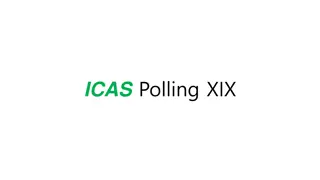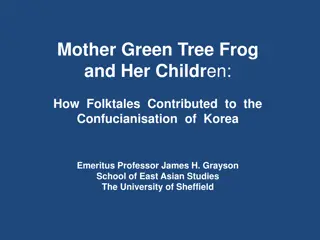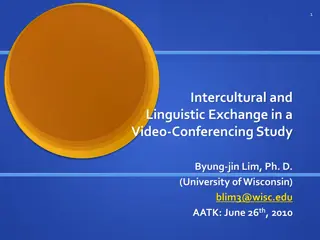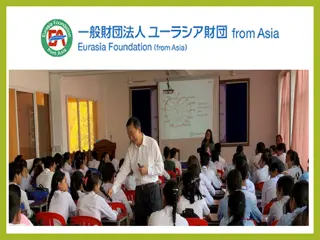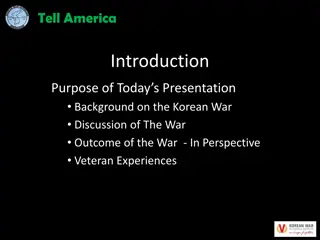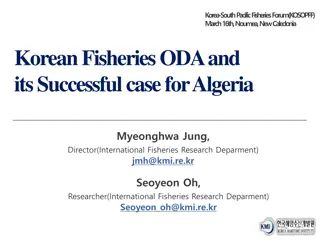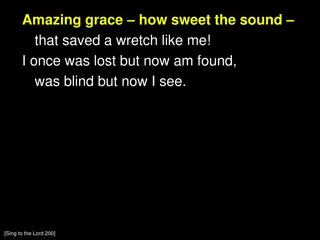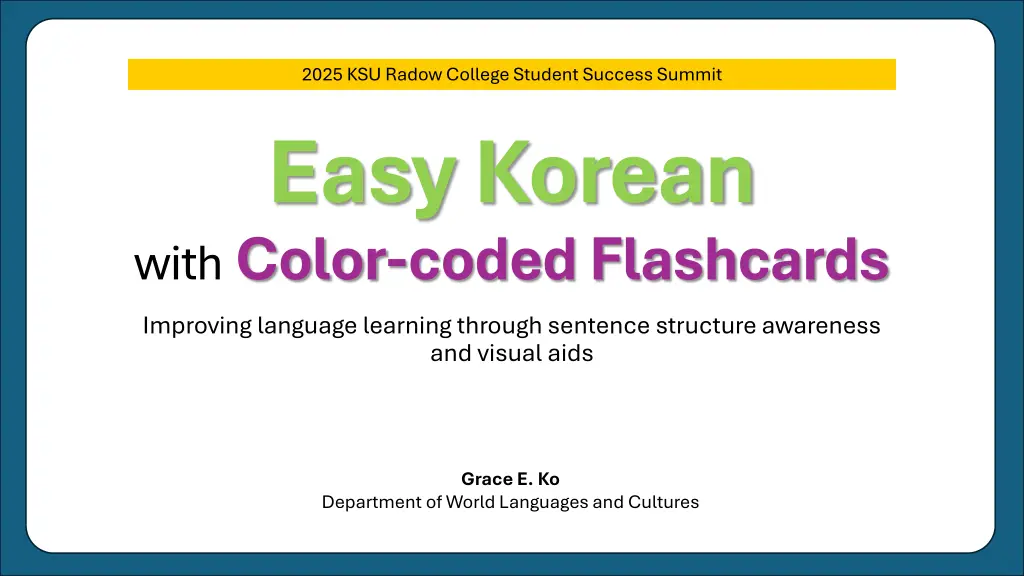
Unlocking the Beauty of Korean Language: Easy Learning Tips and Insights
Discover the intricacies of the Korean language through sentence structure awareness and color-coded flashcards. Dive into key differences between English and Korean, explore the basic Korean alphabet, and learn about the challenges of mastering Korean grammar. Enhance your language learning journey with visual aids and expert insights from Grace E. Ko, Department of World Languages and Cultures.
Download Presentation

Please find below an Image/Link to download the presentation.
The content on the website is provided AS IS for your information and personal use only. It may not be sold, licensed, or shared on other websites without obtaining consent from the author. If you encounter any issues during the download, it is possible that the publisher has removed the file from their server.
You are allowed to download the files provided on this website for personal or commercial use, subject to the condition that they are used lawfully. All files are the property of their respective owners.
The content on the website is provided AS IS for your information and personal use only. It may not be sold, licensed, or shared on other websites without obtaining consent from the author.
E N D
Presentation Transcript
2025 KSU Radow College Student Success Summit Easy Korean withColor-coded Flashcards Improving language learning through sentence structure awareness and visual aids Grace E. Ko Department of World Languages and Cultures
Contents Contents Most difficult languages for English speakers Key differences: English vs Korean Famous quote Korean alphabet Korean syllables Sentence structure comparison Two categories of Korean grammar Fixed structure: English vs Korean Parts of speech Color-coded flashcards activity
You can never understand one language until you understand at least two. - Geoffrey Willans - https://www.azquotes.com/quote/526115
Most Difficult Languages for English Speakers Language Reason Mandarin Chinese It requires memorizing thousands of characters, mastering four distinct tones (which can change the meaning of a word), and navigating a complex grammatical structure. Arabic It features a unique script written from right to left, along with a pronunciation system that can be difficult to grasp. The grammar is challenging, with complex rules and verb conjugations. Japanese Japanese has three distinct writing systems (hiragana, katakana, and kanji), and its grammar. Various levels of formality and sentence structure make it hard to master. Korean It has simple and logical writing system (Hangul). However, Korean grammar can be complex, with various levels of formality, unique verb endings, and a sentence structure different from English.
Key Differences: English vs Korean Feature English Korean Word Order Subject Verb Object (SVO) Subject Object Verb (SOV) *Considered free order except verb at the end Use of Particles Preposition before noun Particle after noun (It is attached to a noun.) Articles a, an, the are used No articles Verb Changes Changes for tense and subject Changes for tense and politeness Pronoun Usage Frequently used Often omitted if understood Politeness/Honorifics Tone and word choice Grammar structure changes Writing System Latin alphabet Hangul (phonetic Korean alphabet)
Basic Korean Alphabet 10 Vowels * V marks vertically shaped vowels. H marks horizontally shaped vowels. [a] V [ya] V [eo] V [yeo] V [o] H [yo] H [u] H [yu] H [eu] H [i] V 14 Consonants [k,g] [n] [t,d] [r,l] [m] [p,b] [s] [ng] [j] [ch] [k ] [t ] [p ] [h]
40 in All 19 Consonants 21 Vowels
Korean Syllables C+V: vowel-ending syllable C+ Combination Vowel * Consonant is silent if it is in the initial consonant position. C+V+C: consonant-ending syllable k/g a n o n k/g C+ Horizontal Vowel C+ Vertical Vowel o+a= wa l/r
Syllable Structure drama tree baby mirror
9 Parts of Speech Sentences are made with words. Based on the function, all words are classified into the following subgroups. English: 8 parts of speech Noun Pronoun Verb Adjective Adverb Preposition Conjunction Interjection Substantives Noun Pronoun Numeral Independent Words Interjection Relatives Particle Declinable Words Verb Adjective (= Descriptive Verb) Modifier Pre-noun Adverb
Sentence Structure Comparison English: S-V-O I eat kimchi. Korean: V always come at the end . = . * In Korean, there is no fixed position for the subject or object. The elements of a sentence can be interchanged freely. However, the main verb always comes last.
Two categories of Korean Grammar 1. Noun + Particle O [meo-geo-yo] to eat [jeo] [reul] I [neun] T kimchi 2. Verb Conjugation /
Fixed Structure: English vs Korean / Topic Location / Time Subject Destination in, on, at / in, on, at Object to ( ) Location Verb Verb Subject Object Destination Time by with Co-participant Means Co-participant ( ) * Means
Color-coded Flashcards Designed to help beginner students visualize and internalize sentence structure Noun/Pronoun Particle/Marker Adverb Verb/Adjective Interjection/Conjunction Basic rules: Separate words with spaces. A particle is attached to a noun as a unit. The verb comes last. The other elements can move around freely. Elements that are understandable in the context are frequently omitted.
G1 Equational Expression: N1 is N2 I am a freshman. To be / / Noun 1 Noun 2 for for for for V-ending V-ending C-ending C-ending Particle (Marker) Noun Verb/Adjective
Yumi I [jeo] Steve 1 4 [an-nyeong-ha-se-yo] to be well 2 [ban-gap-seum-ni-da] to be glad [il-hak-nyeon] sophomore freshman Michael [i-hak-nyeon] 3 [sam-hak-nyeon] senior [sa-hak-nyeon] to be [ye-yo] junior [ye-yo] to be [i-e-yo] to be to be [i-e-yo] [eun] [neun] [do] T I T
G2 Subject-Adjective = Descriptive Verb School is good. for for V-ending C-ending / Noun Adjective Adverb Particle (Marker) Noun Adverb Verb/Adjective
[eo-ttae-yo] Korean language [han-guk-eo] class [su-eop] how is? ? [jae-mi-i-sseo-yo] homework [suk-je] very [a-ju] to be fun [jo-a-yo] [do-seo-gwan] to be spacious [neol-beo-yo] to be good library [man-a-yo] to be okay breakfast, morning to be a lot [gwaen-cha-na-yo] [a-chim] [ma-si-sseo-yo] school to be delicious [ee] [ga] [do] [hak-gyo] S S I
G3 Subject-Object-Verb Yumi eats breakfast. * Object-Subject-Verb is possible. for for for for V-ending V-ending C-ending C-ending / / Noun 1 Noun 2 Verb Particle (Marker) Noun Verb/Adjective
today [o-neul] what [mwo] Yumi [reul] S [eul] O breakfast Michael [ah-chim] television homework [sook-je] friend [muh-guh-yo] [chin-goo] to eat [hae-yo] to meet to see, watch [bwa-yo] to do [man-na-yo] [eun] [neun] [eul] [ga] [ee] [reul] T O O T S O
G4 Expressing Location: Subject-Location-Verb * Location-Subject-Verb is possible. Yumi is in the library. for for The library is in front of the student center. V-ending C-ending / Noun Noun Verb Relative Position Noun Particle (Marker) Noun Verb/Adjective
[hak-gyo-shik-dang] student center school cafeteria library [hak-saeng-hwe-gwan] [do-seo-gwan] 1 2 [ee] S where [eo-di] what [mwo] dormitory [gi-suk-sa] [il-cheung] 2nd floor [i-cheung] inside 1st floor [an] [ap] [i-sseo-yo] next to to be, exist [yeop] in front behind, back [dwi] [eun] [neun] [do] [ga] [e] T S T I L
G5 (Subject)-Location-Object-Verb * Only verb is fixed at the end. * An element can be omitted even if it is a subject. Lisa meets a friend at the bookstore. / Noun Noun Verb for for V-ending C-ending Particle (Marker) Noun Verb/Adjective
gift coffee shop department store [baek-hwa-jeom] [seon-mul] TV [eul] O [eul] O [seo-jeom] friend coffee bookstore [chin-gu] to buy [sa-yo] home, house [jip] [man-na-yo] to see, watch [ma-syeo-yo] to meet to drink [bwa-yo] [e-seo] [eul] [e-seo] [reul] [reul] [reul] O O L L O O
to be thankful [gam-sa-ham-ni-da] Thank you for your time! Grace E. Ko | gko@kennesaw.edu









